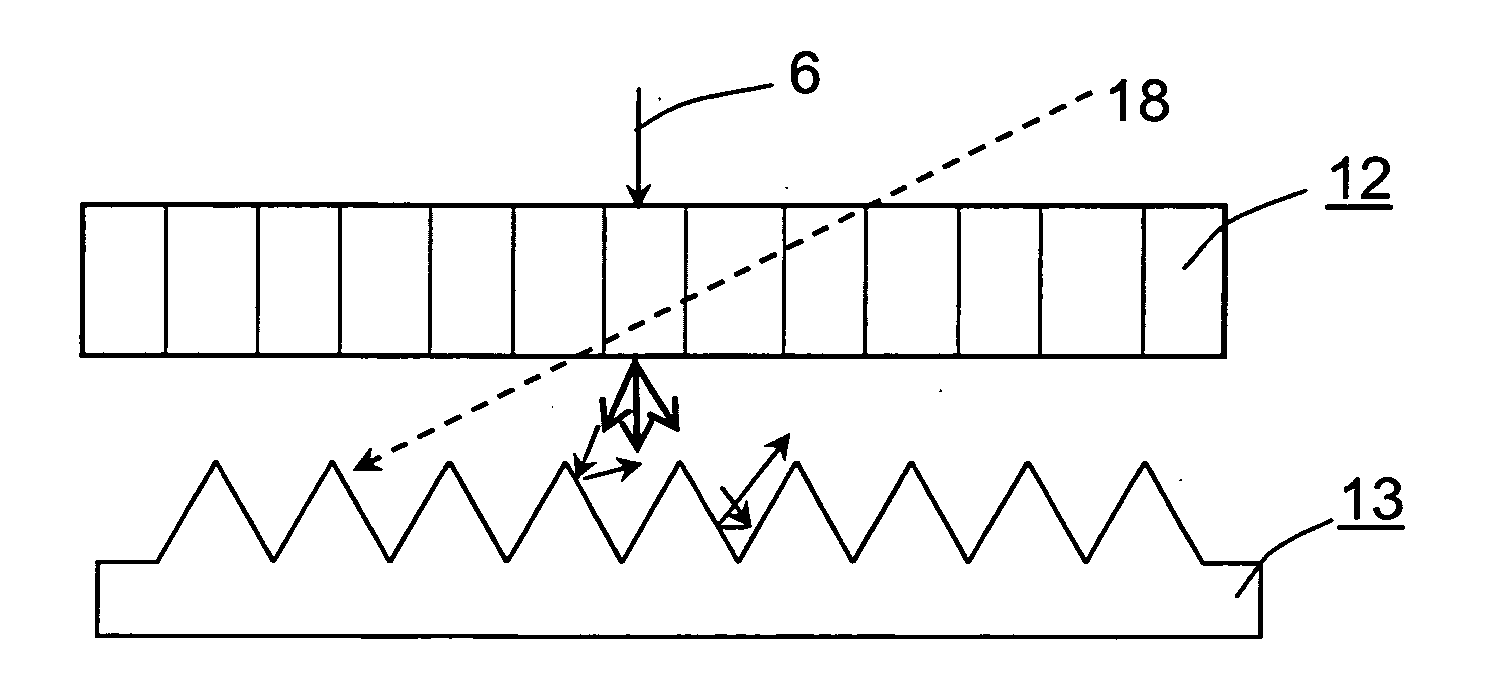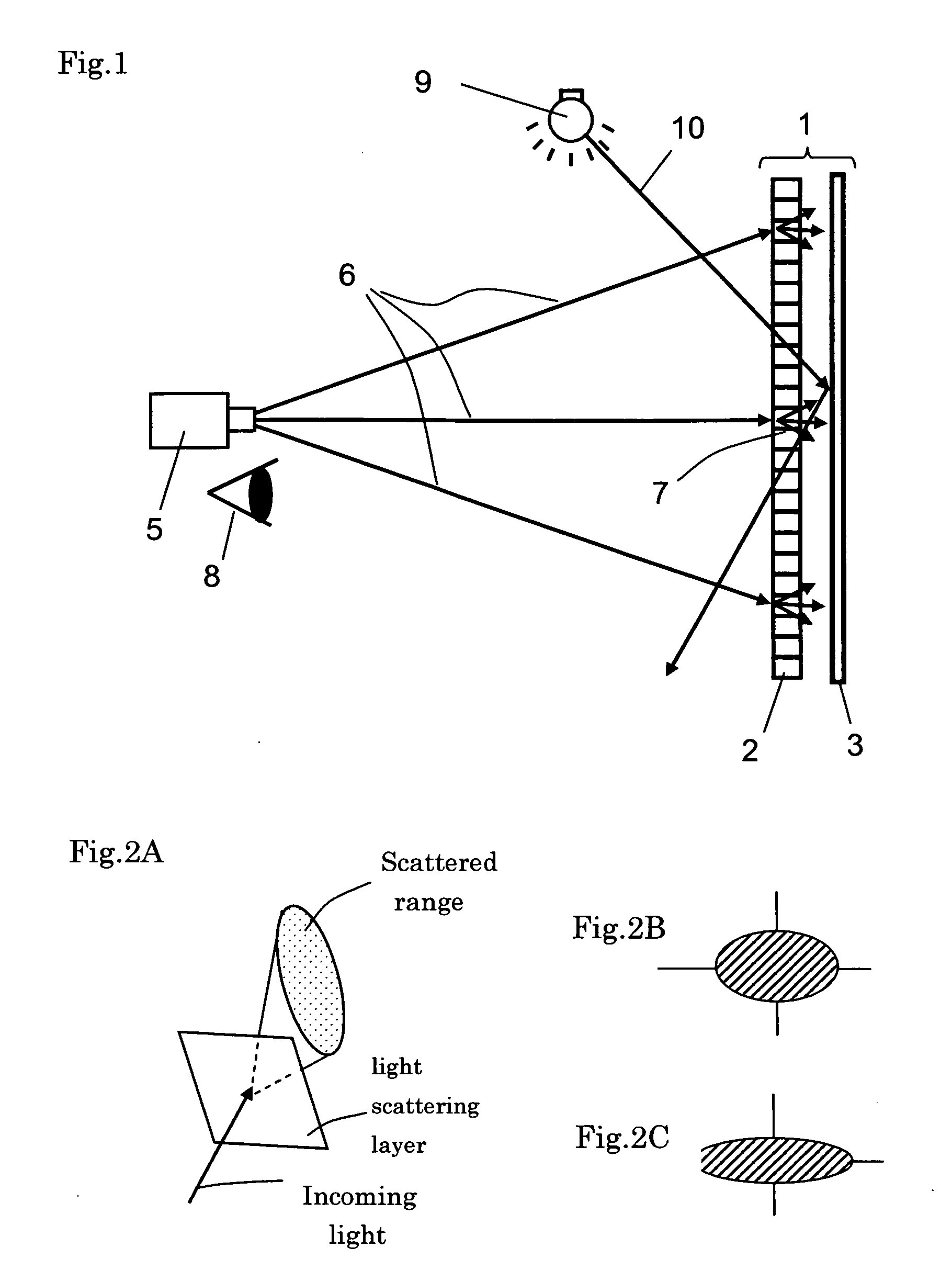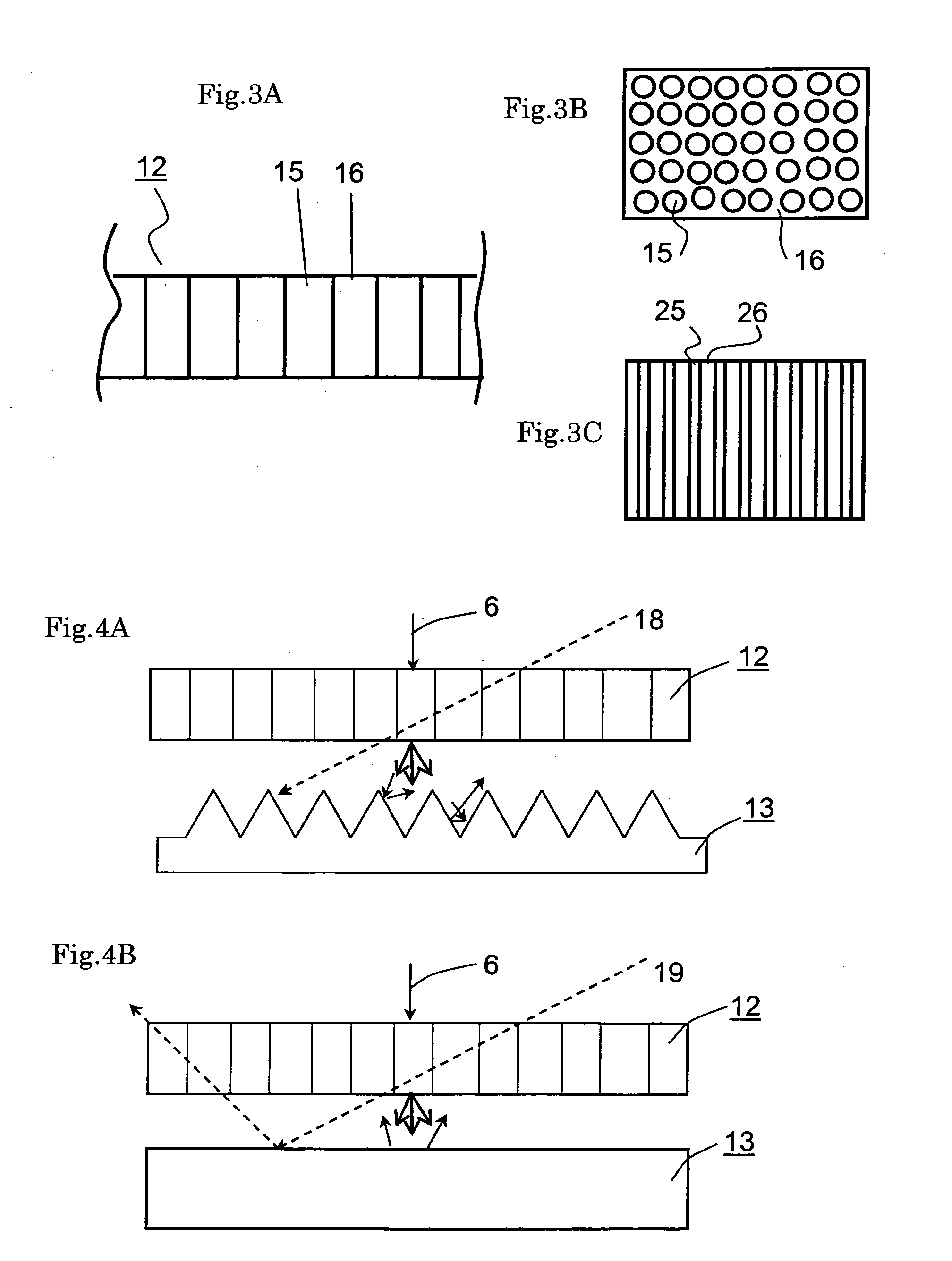Screen and projection system using the same
a projection system and screen technology, applied in the field of front screens, can solve the problems of cost driving, screen according to patent literature 2 cannot be widely utilized, and the requirement of lenticular lenses to correspond the pixel,
- Summary
- Abstract
- Description
- Claims
- Application Information
AI Technical Summary
Benefits of technology
Problems solved by technology
Method used
Image
Examples
first embodiment
of Light-Reflecting Layer
[0055]FIG. 5 provides a scheme of an example for the light-reflecting layer. According to the FIG., a plurality of light-reflecting elements 4 are randomly formed in the light-reflecting layer 3. In this case the reflecting elements 4 are positioned such that the scattering field in the left and right direction is wider than in the up and down direction.
[0056]The areas, in which light-reflecting elements 4 are formed scatters light, whereas areas, in which no reflecting elements 4 are formed simply reflect light.
[0057]This means that the anisotropy in the scattered reflection increases with the concentration of reflecting elements 4.
[0058]Additionally, Moire effects that are generated by the matching of the pitches of the projected image can be avoided since the reflecting elements 4 are positioned randomly.
[0059]Both, positive and negative relief structures may be utilizes as reflecting elements as long as a scattering and reflecting surface can be formed. ...
second embodiment
of Light-Reflecting Layer
[0079]FIG. 7 shows a scheme of the present embodiment of a light-reflecting layer viewed from the side of the directional diffusing layer. As visualized, the reflecting elements 4 of the light-reflecting layer 3 are formed along the up and down direction. Thus, the reflecting elements 4 are continuously formed along the vertical direction of the light-reflecting layer. By the utilization of such reflecting elements, the same screen with a wide viewing angle in the left and right direction can be realized. FIG. 7 shows a construction, in which there is a spatial distance between the reflecting elements 4. Various other positive and negative relief structures can be utilized as reflecting elements 4 as long as a scattering and reflecting surface is formed.
[0080]In FIG. 8, the cross-sectional view of the reflecting elements along the horizontal plane of FIG. 7 is shown. FIG. 8A shows a structure with inward V-shaped relief structure, in which there is a spatial...
third embodiment
of Light-Reflecting Layer
[0084]As described above, the range of reflection angle can be controlled by the structure and positioning pattern of the reflecting elements.
[0085]In the present examples, a consequent application for structuring of the above said is described.
[0086]A case is described in detail, in which the light-reflecting layer is constructed such that also a certain scattering occurs in the up and down direction.
[0087]This means, multiple types of reflecting elements with different scattering and reflection properties are utilized.
[0088]Thereby, a precise control of the proportion of scattered light in the up and down direction versus in the left and right direction is possible and the spatial range of the reflection angle of the screen can be freely designed.
[0089]In FIG. 9, a scheme is shown, in which multiples types of reflecting elements are formed on the light-reflecting layer, in which the scattering and reflection properties of the reflecting elements of type-I ...
PUM
 Login to View More
Login to View More Abstract
Description
Claims
Application Information
 Login to View More
Login to View More - R&D
- Intellectual Property
- Life Sciences
- Materials
- Tech Scout
- Unparalleled Data Quality
- Higher Quality Content
- 60% Fewer Hallucinations
Browse by: Latest US Patents, China's latest patents, Technical Efficacy Thesaurus, Application Domain, Technology Topic, Popular Technical Reports.
© 2025 PatSnap. All rights reserved.Legal|Privacy policy|Modern Slavery Act Transparency Statement|Sitemap|About US| Contact US: help@patsnap.com



